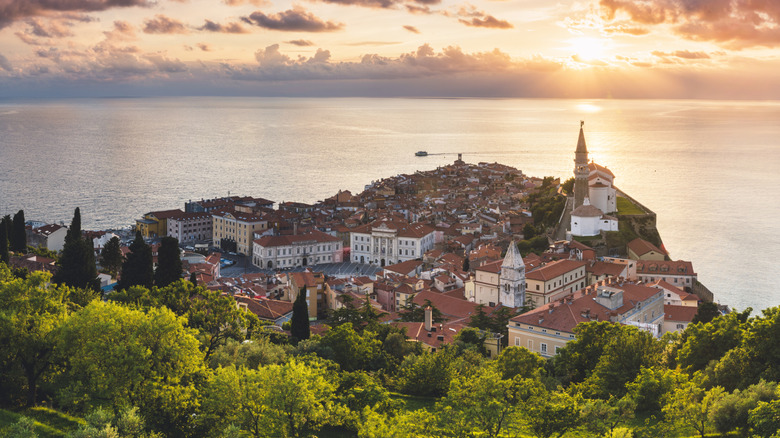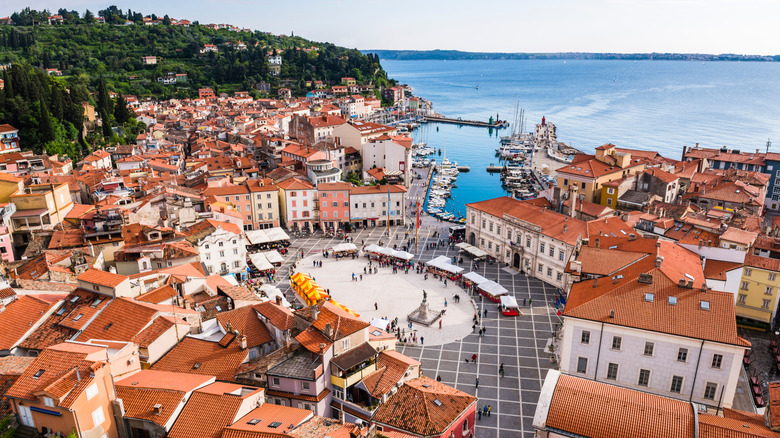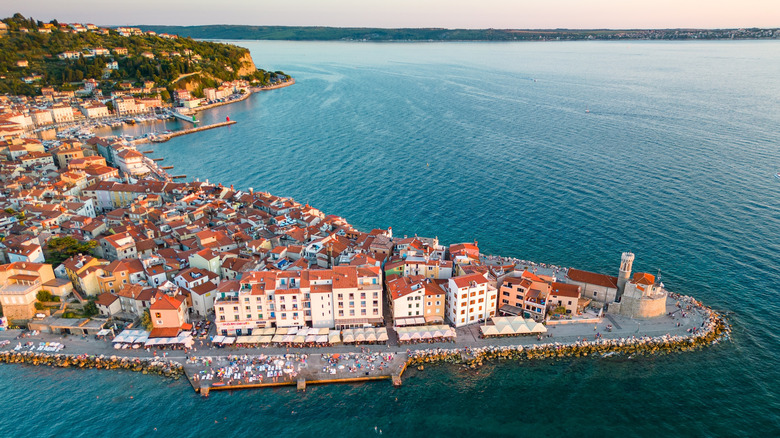Travelers who’ve been to Slovenia agree: This little country is one of Europe’s best-kept secrets. Even Rick Steves says this overlooked country is one of Europe’s most unexpected charmers, and he’s a pretty good authority on the subject. Bordered by Italy, Croatia, Hungary, and Austria, Slovenia combines some of the best of these countries into one charmingly compact package. There’s the Julian Alps, with soaring peaks and castles; the Soča Valley, with its tumultuous history and glistening turquoise rivers; and the Slovene Riviera, a Mediterranean coastline full of Venetian-inspired towns and relaxed vibes. The highlight of Slovenia’s short coastline is the small city of Piran.
Piran is almost unbelievably picturesque, with red roofs, cobbled streets, and sun-soaked squares on a peninsula jutting into the Adriatic Sea. Lush forests and vineyards lead to the town, while a bell tower stands guard above. Piran has everything you’d want in a Mediterranean getaway, like excellent seafood, an aquarium, and stellar views, yet it has also managed to retain a convivial, small-town feel and a well-preserved medieval center.
Piran, a gem of the Adriatic
As Slovenia only has a short coastline – 29 miles to be exact — many of the more inland sites, like Lake Bled, with its island that looks like a medieval fairytale, get more attention. But Piran should not be overlooked, even if only for a day trip. It has plenty of fairy-tale vibes itself (just like all of Slovenia, to be honest), with the added bonus of that sunny Mediterranean weather.
Although Piran was once ruled by both the Venetian and Austrian empires (not to mention Yugoslavia), its roots are much older, especially the medieval Old Town, home to the famous Tartini Square. Named after the renowned local musician Giuseppe Tartini, Tartini Square is the idyllic heart of Piran, with year-round events and sea views. Remnants of Piran’s ancient city walls are also still visible, and the Venetian heritage is evident in many of the buildings, such as St. George’s bell tower.
Piran’s strategic location also made it a center for Mediterranean trade, primarily as a port for salt harvested from nearby salt pans. Sample some of this famous salt — often deemed some of the world’s best sea salts — while in the city, or travel to the nearby Sečovlje Salina Nature Park to witness the traditional methods of salt production.
The city’s maritime history is still evident in the museums, the current port, and the architecture. Visit the Maritime Museum to see artifacts showcased in an 18th-century palace, with exhibits exploring everything from local shipbuilding to underwater archaeology. Aquanauts should visit the Museum of Underwater Activities to learn about the history of diving in the Adriatic before exploring the underwater world of the North Adriatic even further at Piran’s aquarium, home to endemic marine creatures like seahorses and urchins.




